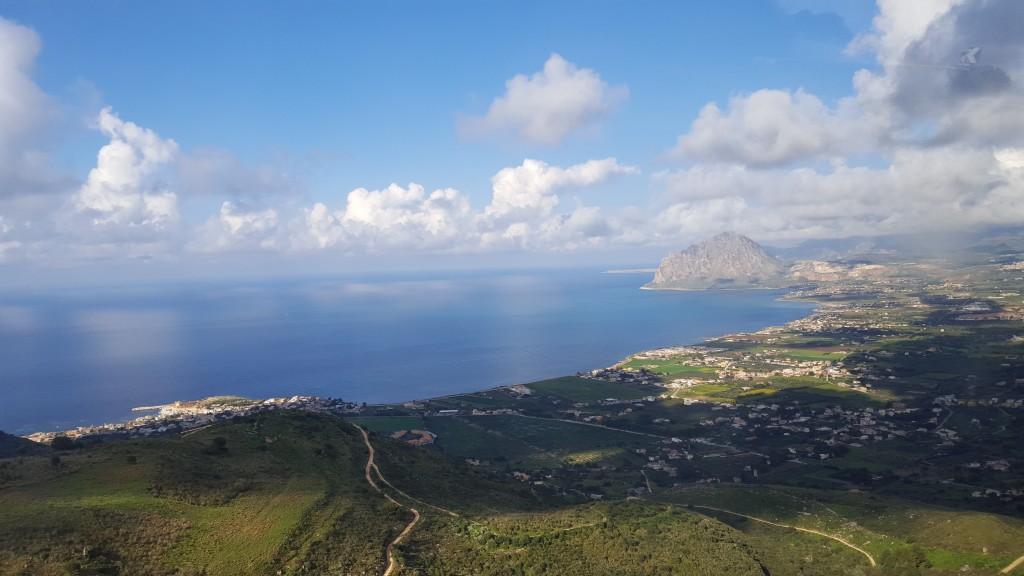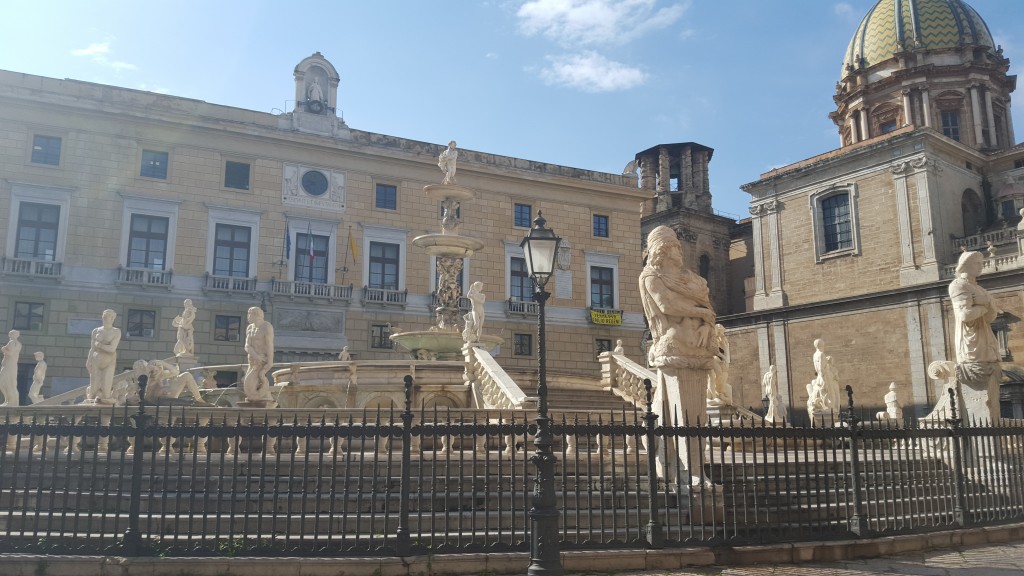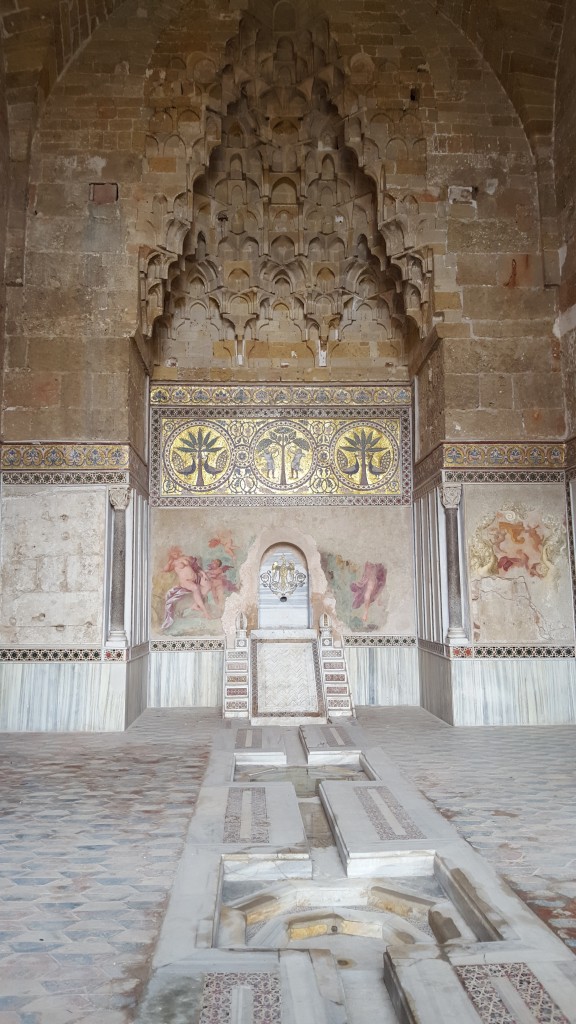
Traveling up the mountainous road to reach the walled city of Erice offered an awe-inspiring view of the coast and the sprawled cityscape below. This sight was especially meaningful for readers of the Aeneid, since Erice may have been the site of the funeral games that took place to honor the death of Anchises, the father of the Trojan hero, Aeneas. After departing Carthage, Aeneas and his men were forced to take a detour in Sicily due to problematic weather conditions and were unable to proceed to their fated lands in Italy. Virgil describes how Acestes, the leader of the Sicilians who was of Trojan descent but had settled in Sicily long ago, spied the foreign ships arriving from a high peak of a mountain; the mountain described may have been this settlement at Erice (Eryx, in Greek). In fact, the fleet of Aeneas may have sailed on those very waters and landed on the very shore depicted in the picture. This bay may also have been the site of the exciting ship race, the first competition of the funeral games. Finally, the Greek name of the city refers to the eponymous hero Eryx, who is also referenced multiple times in the Aeneid. Eryx is Aeneas’ half-brother, since both heroes were sons of the goddess Venus. During the boxing competition, Eryx is referenced again as being the fighting tutor for the Sicilian contestant, Entellus. The city of Erice is thus heavily connected to the myth and lore of the Aeneid and holds a special place in the imagination of Classicists.

